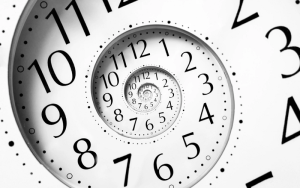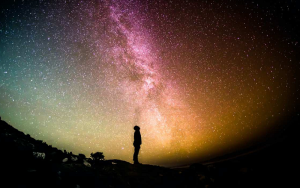
The moon has always captivated humanity with its mysterious influence on Earth’s natural processes. From its effects on tides and ecosystems to its potential sway over human behavior, the moon’s cyclical patterns are a source of curiosity.
Since ancient times, the moon has captivated humanity with its enchanting presence and mysterious influence on Earth’s natural processes. From its effects on tides and ecosystems to its potential sway over human behavior, the moon’s cyclical patterns have long been a source of curiosity and speculation. Here we explore the science behind lunar cycles and investigate how they may impact our sleep patterns, menstrual cycles, and mental health.
Contents
Introduction to Lunar Cycles
As Earth’s only natural satellite, the moon has been an object of fascination for millennia. Over time, its cycles have become intertwined with human culture, mythology, and our understanding of the natural world.
Brief Overview of the Moon’s Phases
The lunar cycle, or the time it takes for the moon to complete a full orbit around the Earth, lasts approximately 29.5 days. During this period, the moon passes through several distinct phases, which are determined by the relative positions of the Earth, moon, and sun.
These phases include the new moon, waxing crescent, first quarter, waxing gibbous, full moon, waning gibbous, last quarter, and waning crescent. Each phase presents a unique appearance in the night sky and has been associated with various beliefs and cultural practices throughout human history.
Cultural Beliefs Surrounding the Moon
The moon has been revered in numerous cultures, often associated with goddesses, fertility, and the passage of time. In ancient societies, lunar calendars were used to track the passage of time and predict seasonal changes. The moon’s phases have also played a significant role in traditional practices, such as agriculture and rituals.
In some cultures, the full moon has been linked to heightened emotions and even madness, giving rise to the term “lunacy.” While these beliefs may not have a solid scientific basis, they underscore the long-standing fascination with the moon and its potential effects on human life.
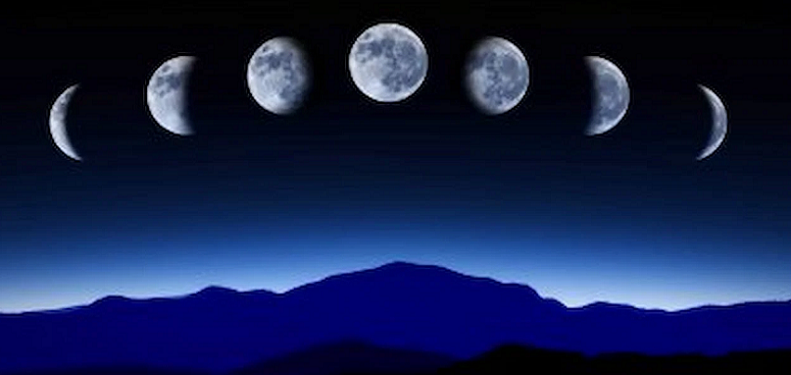
The Science Behind Lunar Cycles
As we delve into the impact of lunar cycles on human health and well-being, it’s essential to understand the scientific basis for the moon’s influence on Earth and its inhabitants.
The Gravitational Pull of the Moon
The moon exerts a gravitational force on Earth, which is responsible for the regular rise and fall of ocean tides. This force is strongest during the full moon and new moon phases when the Earth, moon, and sun are aligned, resulting in higher-than-average tides known as “spring tides.”
Conversely, when the moon is in its first or last quarter phase, the gravitational pull is weaker, leading to lower-than-average tides called “neap tides.” The moon’s gravitational pull has shaped Earth’s ecosystems and continues to play a vital role in maintaining the delicate balance of life on our planet.
Impact on Tides and Ecosystems
The moon’s influence on tides has far-reaching effects on Earth’s ecosystems, particularly in coastal and marine environments. Tidal cycles help distribute nutrients, oxygen, and other essential elements, supporting diverse and productive ecosystems [1].
Many species, such as shorebirds, crabs, and fish, rely on the predictable patterns of tides to feed, breed, and migrate. Consequently, these organisms have evolved in sync with the lunar cycle, showcasing the intricate connections between the moon and life on Earth.
Theories on How Lunar Cycles Affect Humans
Given the moon’s profound impact on Earth’s natural processes, it’s not surprising that some researchers have proposed that lunar cycles may also affect human physiology and behavior. One theory suggests that the moon’s gravitational pull could influence the human body, which is primarily composed of water.
Another theory posits that the moon’s illumination during different phases may disrupt our circadian rhythms, affecting sleep patterns and hormone production. While these theories are intriguing, it’s important to note that the scientific evidence for these effects remains limited and somewhat controversial [2].
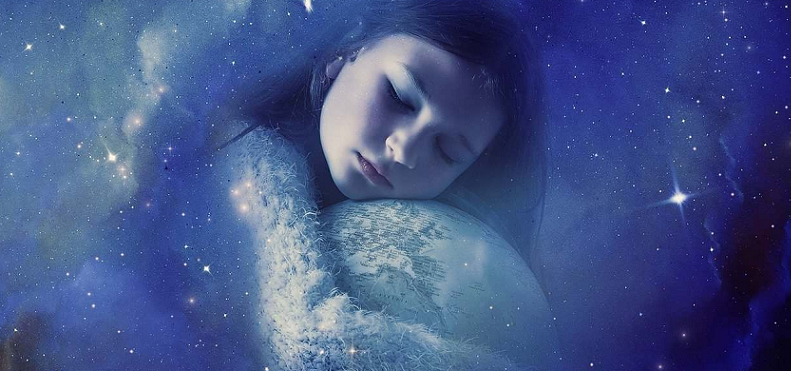
Sleep and Lunar Cycles
One of the most widely discussed aspects of the moon’s influence on human health and well-being is its potential impact on sleep patterns. In this section, we will explore the effect of moonlight on sleep, review studies linking sleep quality to lunar phases, and discuss possible mechanisms that may explain sleep disruption during certain moon phases.
The Effect of Moonlight on Sleep Patterns
Before the widespread use of artificial lighting, moonlight played a significant role in shaping human sleep patterns. During the full moon, when the moon is at its brightest, it is thought that humans may have experienced increased wakefulness due to heightened levels of natural light at night.
Conversely, the new moon, when the moon is not visible, would have been associated with darker nights and potentially deeper sleep. Although modern lifestyles have largely negated the influence of moonlight on sleep, some researchers suggest that our innate biological rhythms may still be sensitive to lunar cycles [3].
Studies Linking Sleep Quality to Lunar Phases
Several studies have investigated the relationship between lunar cycles and sleep quality, with mixed results. Some research has found that individuals experience shorter sleep duration and reduced sleep efficiency during the full moon phase. For example, a study published in Current Biology in 2013 examined the sleep patterns of 33 participants over several lunar cycles and found that they took longer to fall asleep and had shorter overall sleep duration during the full moon compared to other phases.
However, other studies have not found a significant association between lunar cycles and sleep quality. The inconsistency in findings may be due to differences in study design, participant characteristics, and methods of assessing sleep quality.
Potential Mechanisms for Sleep Disruption
The mechanisms by which lunar cycles may influence sleep remain unclear, but several theories have been proposed. One possibility is that the moon’s gravitational pull could affect the release of certain hormones, such as melatonin, which regulates sleep-wake cycles.
Another theory suggests that the increased light exposure during the full moon phase could disrupt our circadian rhythms, leading to sleep disturbances. Additionally, cultural beliefs and expectations surrounding the full moon may contribute to sleep disruption by heightening anxiety or causing individuals to be more alert during this phase. Further research is needed to elucidate the potential mechanisms underlying the relationship between lunar cycles and sleep [4].
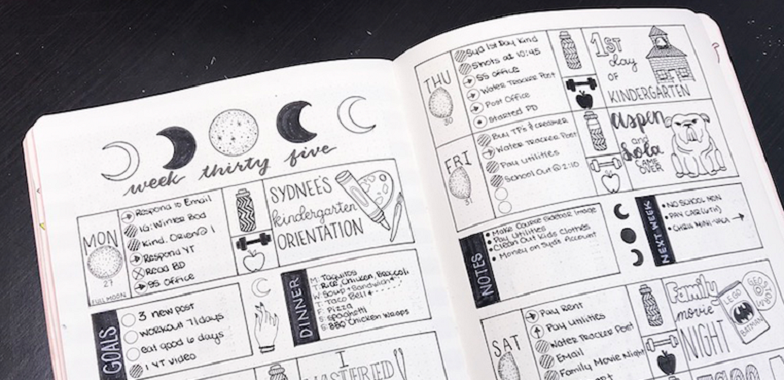
Menstrual Cycles and the Moon
Another area of interest in the relationship between lunar cycles and human health is the potential connection between the moon and menstrual cycles. Throughout history, the moon has been associated with fertility and menstruation in various cultures.
Historical Beliefs About Moon and Menstruation
Many ancient cultures have observed a parallel between the lunar cycle, which lasts approximately 29.5 days, and the average length of a woman’s menstrual cycle, which is about 28 days. This similarity has led to a long-standing association between the moon and female fertility.
In some cultures, the moon is viewed as a symbol of fertility and is often linked to goddesses who govern reproduction and childbirth. Moreover, the terms “menstruation” and “menses” are derived from the Latin word “mensis,” meaning “month,” which is related to the word “moon.”
Research on Menstrual Cycles and Lunar Phases
Scientific studies examining the relationship between lunar cycles and menstrual cycles have yielded mixed results. Some research has reported a higher likelihood of menstruation onset during the new moon phase, suggesting a possible synchronization between the lunar cycle and menstrual cycle. However, other studies have not found any significant association between the two [5].
One potential explanation for the inconsistent findings is the variability in menstrual cycle length among women, which can range from 21 to 35 days. Additionally, factors such as stress, age, and hormonal imbalances can disrupt menstrual cycles, making it difficult to identify a clear pattern in relation to lunar phases.
Possible Explanations for the Connection
Although the scientific evidence for a connection between lunar cycles and menstrual cycles remains limited, several theories have been proposed to explain the observed associations. One possibility is that women’s hormonal cycles may have evolved in response to the moon’s gravitational pull or its influence on environmental factors, such as food availability.
Another theory suggests that cultural beliefs and rituals surrounding the moon and menstruation may have influenced women’s perception of their cycles and, in turn, their physiological responses. Further research is needed to investigate these theories and establish whether there is a genuine link between lunar cycles and menstrual cycles.
Mental Health and Lunar Cycles
The potential impact of lunar cycles on mental health is another area of interest in the exploration of the moon’s influence on human well-being. The full moon, in particular, has long been associated with changes in human behavior, mood, and emotions.
The Moon’s Impact on Human Behavior
Throughout history, the full moon has been linked to various changes in human behavior, such as increased aggression, impulsivity, and even madness. The term “lunacy,” derived from the Latin word “luna” for moon, reflects this cultural belief. While these ideas have persisted for centuries, the scientific evidence supporting a connection between lunar cycles and human behavior remains limited and often contradictory.
Studies on Mood and Emotion During Lunar Phases
Research on the relationship between lunar cycles and mood or emotional states has produced mixed results. Some studies have found small but statistically significant associations between specific moon phases and increased reports of anxiety, depression, or other mood disturbances. For instance, a study published in the Journal of Affective Disorders in 2018 found a modest increase in emergency room visits for mood disorders during the full moon and last quarter phases [6].
However, other research has failed to find a consistent link between lunar cycles and mood or emotional changes. The discrepancies in the findings may be due to methodological differences, small sample sizes, and the influence of other factors, such as individual differences in sensitivity to lunar cycles or the placebo effect.
Factors Influencing the Moon-Mental Health Relationship
Several factors may contribute to the inconsistent findings on the relationship between lunar cycles and mental health. First, cultural beliefs and expectations surrounding the full moon may shape people’s perceptions of their mood and behavior, leading to a self-fulfilling prophecy.
Second, individual differences in sensitivity to environmental cues or changes in circadian rhythms during different lunar phases may play a role in determining the impact of the moon on mental health.
Finally, media coverage and public awareness of the supposed “lunar effect” may also contribute to the belief in a connection between the moon and mental health, even in the absence of robust scientific evidence.
References
[1] The moon really may have strange effects on our health
[2] So, does the Moon really affect our health and mood?
[3] Does the Moon Affect Humans?
[4] The lunar cycle: effects on human and animal behavior and physiology
[5] Can the moon really influence your health?
[6] The mood-altering power of the Moon

